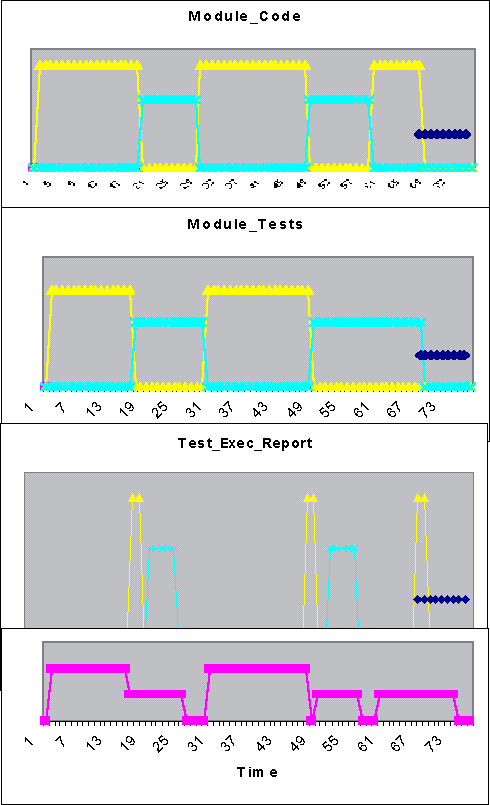
|
Sadaf Mustafiz has built a software process model [50] for SVM. The development process is modeled as several tasks, each of which is ``an entity (a real object that exists and has an extended lifetime)'' (Sadaf Mustafiz).
Because problems are discovered in round 1 during the running tests task, another round must be added to fix those problems. Before round 1 finishes, the task of analyzing problems is undertaken to analyze the problems that are to be fixed and the cost to fix them in the next round.
Round 2 is based on the results of round 1. It strives to fix the problems discovered in round 1, as well as to improve the functionality of the system. The development becomes faster: developing code takes 6 hours, developing tests takes 4 hours, running tests takes 1 hour, and analyzing problems takes 2 hours. Because there are still problems found in the running tests task, round 3 is required, which only aims at fixing those remaining problems.
In round 3, the problems are fixed, and all the tests are passed. The development process successfully finishes.
Sadaf Mustafiz has modeled this process with DCharts. The model is simulated with SVM. The output trace is written in text files. The plots of the output trace is shown in Figure 9.2.
More information about the above software process model can be found at the Modeling and Simulation Based Design course homepage: